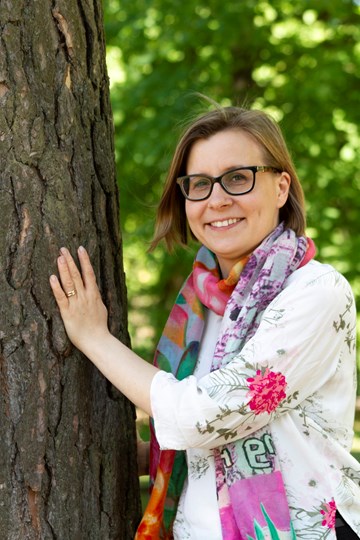Textiles and plastic from wood: Research and partnerships create new solutions
To explore the development paths of these solutions as well as future needs, Gaia Consulting conducted a survey, interviewing 20 key players in the biobased markets. The survey was part of the larger OECD project initiated by Finland, to analyse how the value-chains in the biobased new materials sector are widening to business ecosystems. In addition to Finland, also several European countries and the USA, Argentina and Japan are participating the project.
There is a growing market for cellulose-based textiles for a wide variety of applications. Clothing and interior design textiles are a major market, as are technical textiles needed for industrial applications, hygiene products and health care textiles such as bandaging supplies. Solutions to these needs have been developed in many large research and development projects conducted by companies and research institutes, most recently in the Advanced Cellulose to Novel Products programme and New Fibre Products project, which involved improving the antimicrobial properties of cellulose fibres. Ioncell-F development has resulted in a new process, now on the verge of commercialization, for the manufacture of regenerated cellulose fibers for applications such as the production of textiles. An extensive multiannual research project called Design Driven Value Chains in the World of Cellulose involved combining Finnish design expertise with the manufacture of new products from cellulose. Meanwhile, the Textile recycling project creates new forms of cooperation in the use of waste textiles as raw material. In all these projects, public funding for research and cooperation with the business sector has been important.
In the plastics and composite materials market, plastic made from fossil raw materials can be replaced with biobased plastic in a number of applications. For example, plastic-like cellulose-based materials can be used in packaging applications in food, beverage and cosmetics sectors. Similarly, toys and plastic parts in electronic devices may be suitable applications for biobased materials. In composites containing different materials, biomaterials can introduce excellent new characteristics such as light weight. Biobased composite materials are already used in the automotive and construction industries and interior design structures. Many new Finnish companies, such as Sulapac (cosmetics packages made from biomaterials), Welmu (biobased cling film), Paptic (cellulose-based plastic-like packaging material), Woodio (furniture made from biocomposites), Lumir (biobased acoustic plates for interior design) and Wall + (biobased interior tiles) are aiming to conquer the biobased products market.
Future needs identified in the interviews included network building. Networks should extend over the entire value chain of a new solution and incorporate customers and their needs; these partnerships would enable rapid market entry for the new products. In addition to building networks, companies also need to expand their knowledge of potential business models in new markets. At present, many new biotechnology companies are in an early growth stage, and need support and partnerships to support their growth. And, because the demonstration facilities of biobased products often require major investments, companies planning such ventures expressed a need for financing alternatives that would reduce the risk. Furthermore, any efforts to change international regulations and standards should be made in consideration of the special characteristics of bioproducts and the market potential biobased raw materials can offer.
From a market perspective, biobased products and solutions must be at least as good as the solutions they replace. Simply being biobased is not enough; solutions must be sustainable from a number of different perspectives. This provides Finnish players an excellent opportunity to emerge not only as specialists in bioeconomy but also in the closely related circular economy. There are significant growth opportunities in areas such as product design combined with robust cellulose-related competence, expertise in long life-cycle and reuse of products, as well as the sorting and reuse of discarded materials.
Read the full report and slides
Innovation Ecosystems in a Sustainable Bioeconomy – A Finnish case Study for OECD report, 2018
Innovation Ecosystems in a Sustainable Bioeconomy – A Finnish case study for OECD slides, 2018
Read more
Cellulose-based fibres will open a new future for Finnish textile industry – News 26.6.2018
Textiles and plastic replacers from wood – collaboration and research will create new opportunities – News 27.6.2018
